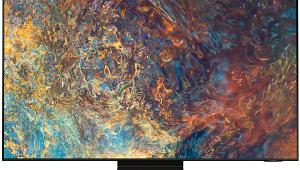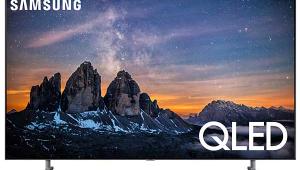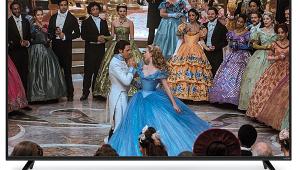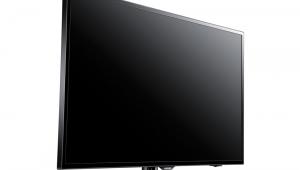Sharp Elite PRO-60X5FD 3D LED LCD HDTV

When Pioneer announced it was dropping out of the HDTV business in 2009 (its remaining sets were available on a limited basis until early 2010), the video world shuddered. While there were sets at the time that could at least match Pioneer’s Elite-branded Kuro models with respect to color, resolution, and video processing, most independent observers—and most A/V reviewers—agreed that no other sets could equal the Pioneers’ black level. But in an era of dropping flat-panel prices, Pioneer couldn’t hope to match the competition’s stickers while retaining the quality it was known for, and they succumbed to market forces.
Enter Sharp, a company with LCDs in its genes. No, Sharp has not suddenly decided to get into the plasma business. Instead, it acquired the rights to use the Elite name (but not the Kuro designation) in a new line of high-end LCD sets. These would not be badged as either Sharps or Pioneers, but rather marketed simply as Elites.
But there was more to Pioneer’s involvement here than the simple use of the Elite name, the model numbers (strikingly reminiscent of the Kuros’), and the similar design of the sets’ aesthetics, remotes, and user manuals. According to Sharp, Pioneer provided key input on picture quality and “picture DNA,” although it was not involved in the design beyond providing remote codes for compatibility with Pioneer Elite A/V gear.
The new Elite LCDs also share the old Elite Kuros’ high prices. In fact, given today’s generally lower flat-panel prices vis-à-vis the competition when the Kuros were in production, the new Elites’ prices look even higher. There are currently two Elite models. The 60-incher, our PRO-60X5FD review unit, will set you back $6,000 (MSRP). The larger 70-inch PRO-70X5FD is $8,500. But it’s worth pointing out at this stage of the review that while you don’t always get what you pay for in this world, you often do.
What’s Inside?
Make no mistake: The Elites are not simply Sharp HDTVs with Elite badges and prices. The Elite LCD panels are produced in Sharp’s advanced Generation 10 plant in Sakai, Japan, and employ a new liquid crystal technology (versus Sharp-branded panels) that is said to make the crystals “smaller, softer, thinner, and faster.” Beyond starting with this new LCD panel, Sharp says its engineers weren’t limited to hitting any particular price point—clear enough from those premium stickers.
The sets offer all the features you expect in a modern HDTV, plus a few you don’t. They’re 3D ready and THX certified. You can access the Web either via Wi-Fi or a direct Ethernet link to your home network; Web services include Vudu, Netflix, and YouTube, among others. Sharp provides full calibration features, including both two- and 10-point white balance controls and full color management. Full LED- backlit local dimming helps produce the inky blacks we all crave. Sharp hasn’t released and won’t confirm the number of dimming zones they’re using, but sources have told us it’s 240 zones in our 60-inch model and 336 zones in the 70-inch.
The Elite sets also offer Sharp’s Advantage Live program. If a problem arises, you can establish a direct Internet connection between your set and Sharp’s technicians for a diagnosis or remote adjustments.
At the top of the Elites’ unique feature set is Intelligent Variable Contrast (IVC), with five options: local dimming off, local dimming on, and three advanced settings. Local dimming positions clusters of LEDs behind the screen. These zones dim selectively according to the demands of the image in their specific areas; that is, the LEDs behind the dark areas darken, while the LEDs behind brighter areas remain bright. The advanced positions (low, middle, and high) also have local dimming but in addition engage IVC, which “controls brightness and backlight to create depth of color, brilliance, detail, and dark scenes.” In other words, it includes additional processing that makes bright highlights, such as fireworks against a night sky, pop out more vividly against far darker backgrounds.
I found the advanced settings (mostly low) beneficial on bland-looking cable channels, or with significant room lighting, or, in particular, for 3D. But for normal 2D movie watching in dim room lighting, I avoided them, staying with local dimming only. On bright scenes, the advanced selections introduced an unpleasant glare when viewed in a dimly lit or darkened room, even on their low setting.
The only additional features I found helpful were color temperature, color management, and gamma. As for a number of the others, I generally left them off or in their default positions. One surprisingly missing feature is picture-in-picture or any similar multi-image capability, which might be important to some buyers.
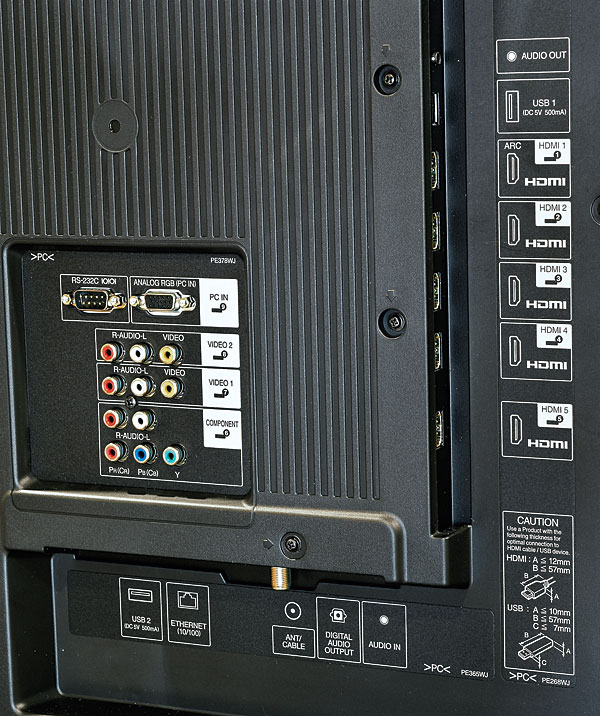
In most 1080p HDTVs, each of the 1920 by 1080 pixels that make up the image (about 2 million total) include active red, green, and blue elements—or subpixels. But Elite’s RGB+Y technology adds a separate yellow subpixel to the mix. (Sharp uses similar technology in its Quattron sets, but there it’s called Quad Pixel.) Yellow isn’t a native component in our video source materials; they contain only red, green, and blue, from which all of the other colors, including yellow, are normally derived. But in the Elite, the yellow pixels are driven with a signal that electronically derives within the set from the red, green, and blue primaries. With separately driven yellow pixels, Sharp can exercise more control over this color, which is a major component in fleshtones, various metals (particularly brass and gold), light-colored hair, and, of course, yellow objects. The approach is unique to Sharp at the moment and is promoted as an advance, but whether the visible result is really a more accurate reproduction of the source is another matter.
The Elite’s motion enhancement feature has four different settings, including off. All of them activate frame interpolation. One of the settings, FluidMotion, also appears to darken the image somewhat, which indicates the use of a supplementary motion smoothing technique called dark-frame insertion. The set normally operates at a native refresh rate of 120 hertz, but a scanning backlight produces an effective 240-Hz frame rate. When the set receives a 2D source at 24 frames per second (fps), it adds four new frames for each of the real frames to reach 120 Hz. With motion enhancement engaged, the Elite interpolates the new frames from the real frames; with it off, the set simply repeats the extra frames. For sources at 60p (or 1080i sources that have first been converted to 1080p/60 either externally or within the set), only one added frame is needed—either interpolated or repeated—to reach the 120-Hz refresh rate. For 24-fps 3D sources, which input 48 fps (24 fps for each eye) to the set, the refresh rate changes to 96 Hz. I don’t need to repeat here my often-stated dislike for the soap-opera, video-ish look that motion interpolation gives to movies, but your opinion may vary. I didn’t use this feature and didn’t find motion smear to be a significant problem for the Elite on most films, even without it.
Of the 13 A/V modes (including ISF day and night—accessible only after a professional calibration), I gravitated first to the Elite pure mode. But it proved anything but pure and appeared to alter the color gamut based on brightness level, pushing it wider as the picture got dimmer. After I discovered this and other limitations, I switched to the movie (THX) mode for all of my calibrations and viewing.
The Elite comes with two pair of rechargeable 3D glasses, with extras available for $100 each. The 3D features include a 2D-to-3D conversion mode (like most, it’s moderately effective but no substitute for the real thing), a 3D brightness boost feature, and a switch on the 3D glasses that lets you change the image to 2D for those in the group who are bothered by the 3D effect.
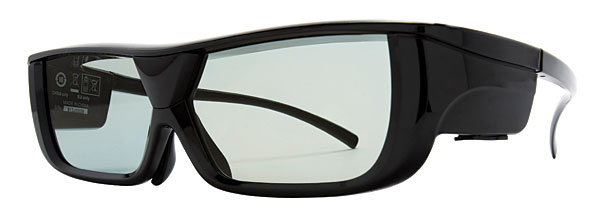
The Elite’s reflective-glass screen surface, though common in today’s high-end sets, will likely be an issue for some of you who can’t control ambient light to minimize glare. The remote was functional. It doesn’t have too many or too small buttons and has a mostly intuitive layout (except for the Netflix button that I kept hitting because it’s located directly below the navigation control). The backlighting is dim and doesn’t illuminate the buttons’ labels. There’s no app to convert your iWhatever or megadroid into a remote control for the Elite, nor is this capability anticipated as an update for this year’s models.
2D Performance
The Elite’s performance was average on our Video Test Bench. The 2:2 HD and 2:2 SD failings are common even among today’s best sets. On the MA (motion adaptive) HD test, which involves a rotating bar against a stationary resolution pattern, there was intermittent flickering in the stationary pattern viewed from an Oppo BDP-83 Blu-ray player (which played fine on my Pioneer Kuro PRO-141FD) but no flickering from a Panasonic DMP-BDT210. It wasn’t serious enough to deny a passing grade, and I saw no sign of the flickering with normal program sources on either player.
While the PRO-60X5FD’s post-calibration color was for the most part vibrant and in some cases stunning, on some (but not all) familiar mid-low to low-brightness scenes, fleshtones were a bit more reddish than I’m used to seeing. I turned down the color control, which helped, although the right setting of this control varied between discs. Yellows and golds were vivid, but at least in my preferred mode—movie (THX)—they were only subtly more so than on competing sets. I expected a more dramatic difference, but since the calibrated movie (THX) mode produced both a very accurate gray scale and color gamut, I shouldn’t have been surprised. Other modes, such as Elite pure out of the box, produced more exaggerated (but not cartoonish) golds and yellows.
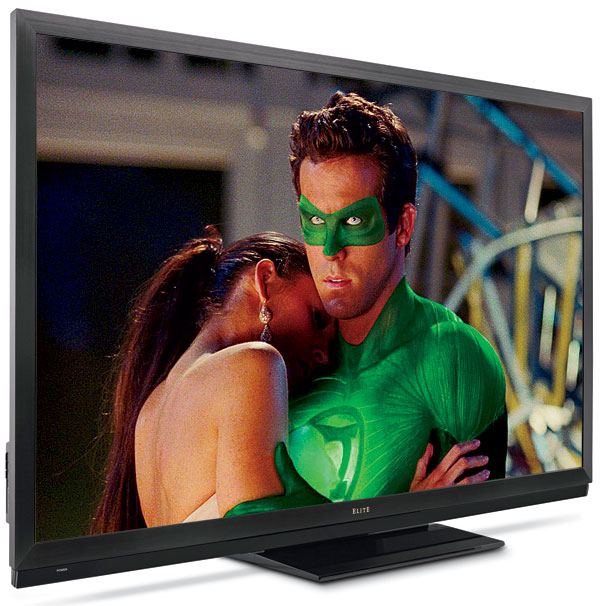
Unlike a few other local-dimming sets we’ve tested recently, the Elite’s screen doesn’t go totally black when you feed it a full-field black source; that is, the LED backlighting doesn’t completely shut off. You can just make out the screen in a darkened room (as you can, by the way, in the final-production generation of Pioneer Elite Kuro plasmas). But turn on any room lights with the new Elite, and the blacks totally disappear. In a darkened room, the black bars on 2.35:1 or 4:3 films also disappear, except on the very darkest scenes where our pupils open wide and we become sensitive to even the merest hint of light.
Harry Potter and the Half-Blood Prince is a black-level and shadow-detail torture test. Near the beginning, when Harry and Dumbledore travel to a darkened village late at night, you can see every detail in the shadows, and the image doesn’t become either crushed or grayed out. The result was just as impressive when Harry is deposited into a dark field outside of the Weasley house, or when he arrives at the gates of Hogwarts, or later as he and Dumbledore search for Voldemort’s horcrux in a dark cave.
Stargate: Continuum opens with one of the more difficult to reproduce star fields I’ve seen. The Elite performs beautifully on this test. All of the local-dimming sets I’ve tested recently have produced distinct halos around the brightest stars, since it’s difficult for even a small zone of LED backlights to pinpoint only a single star without having the light spill over into the black background. The Elite was the first such set I’ve reviewed that was completely free of these halos—both here and on other program material.

